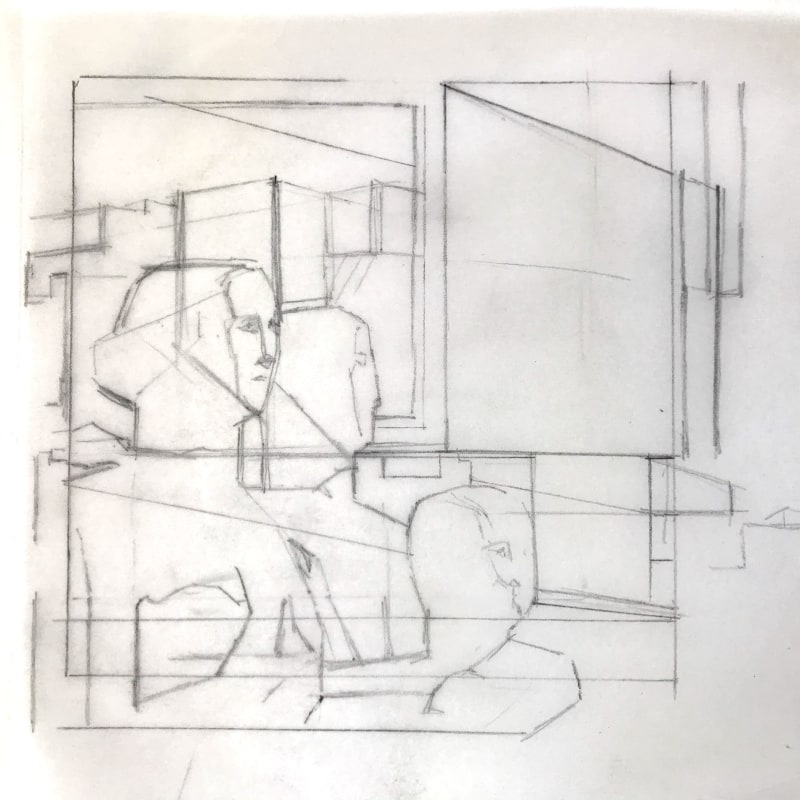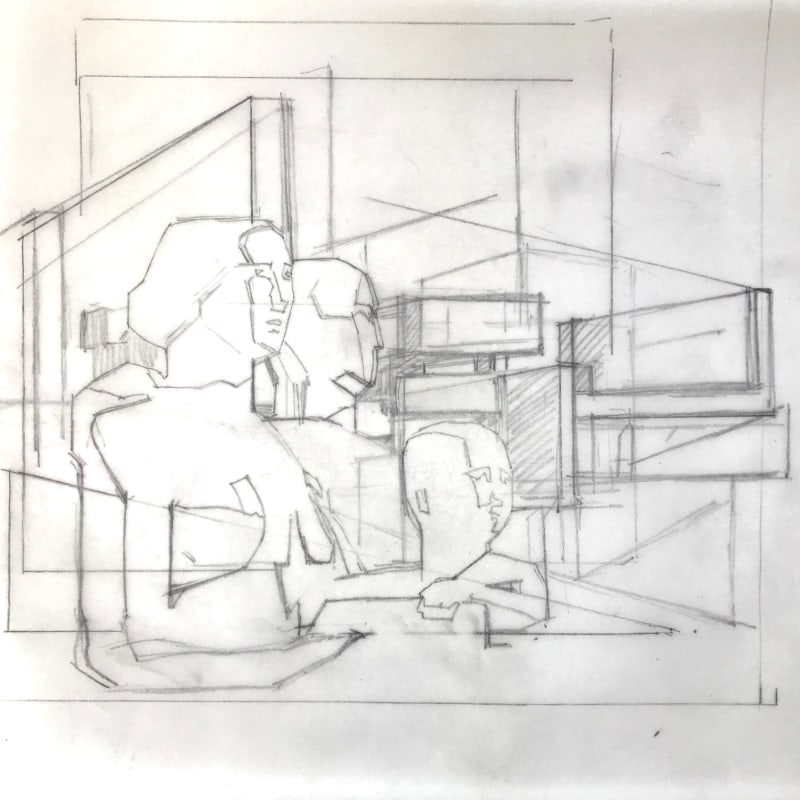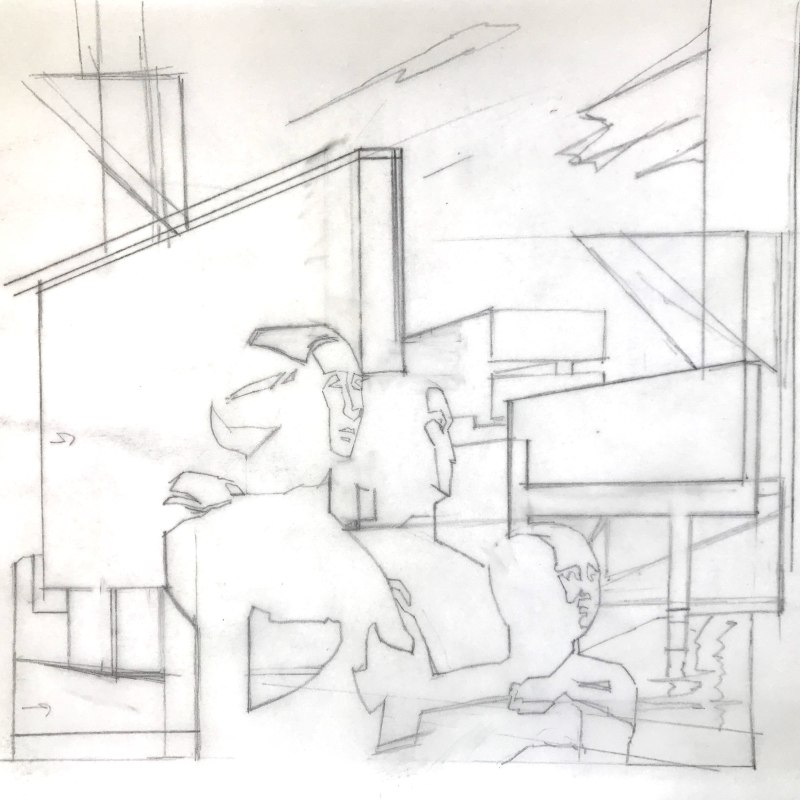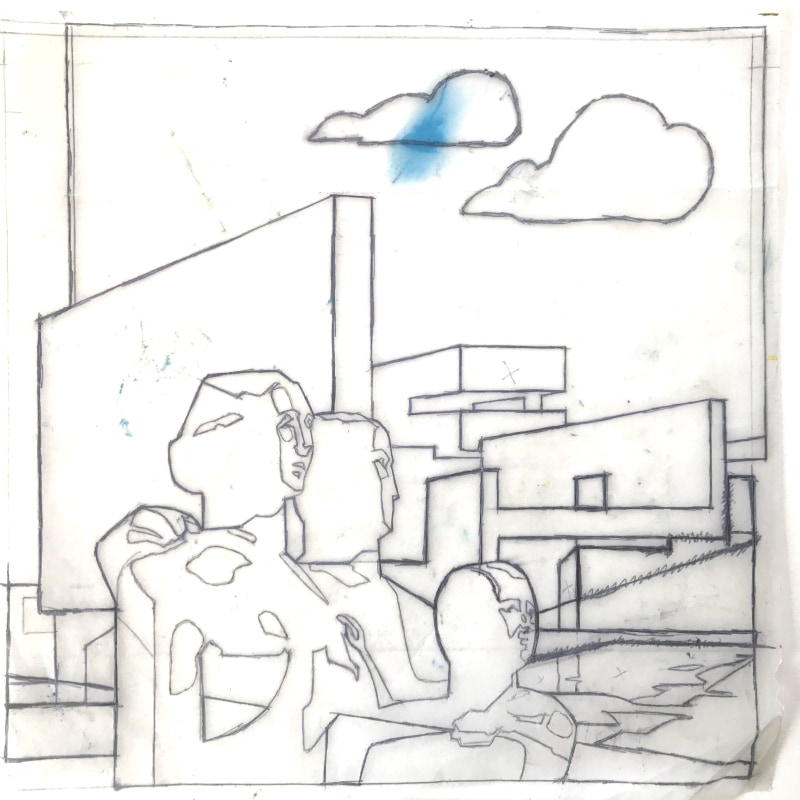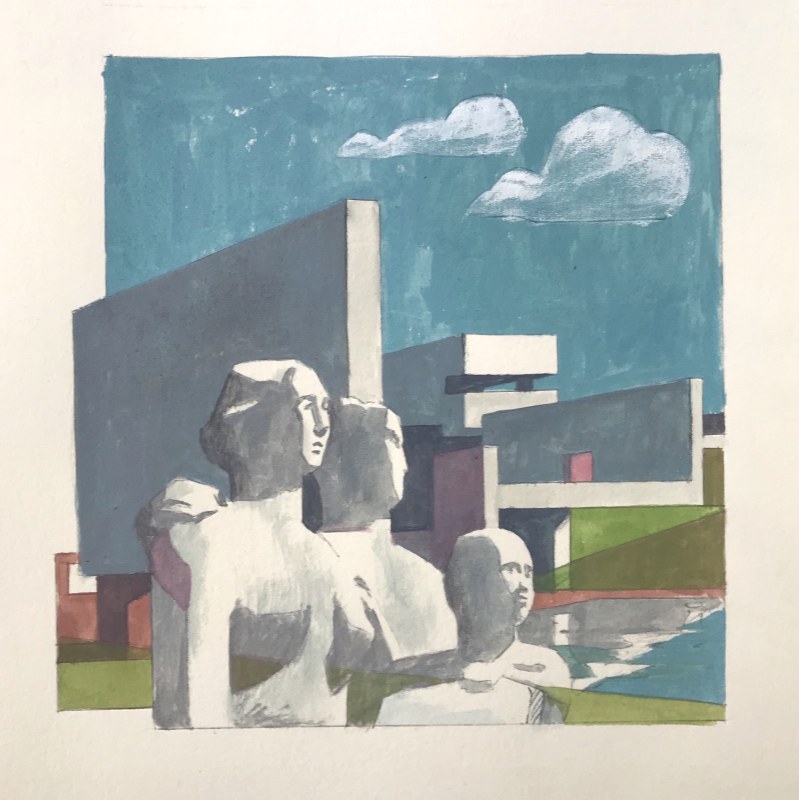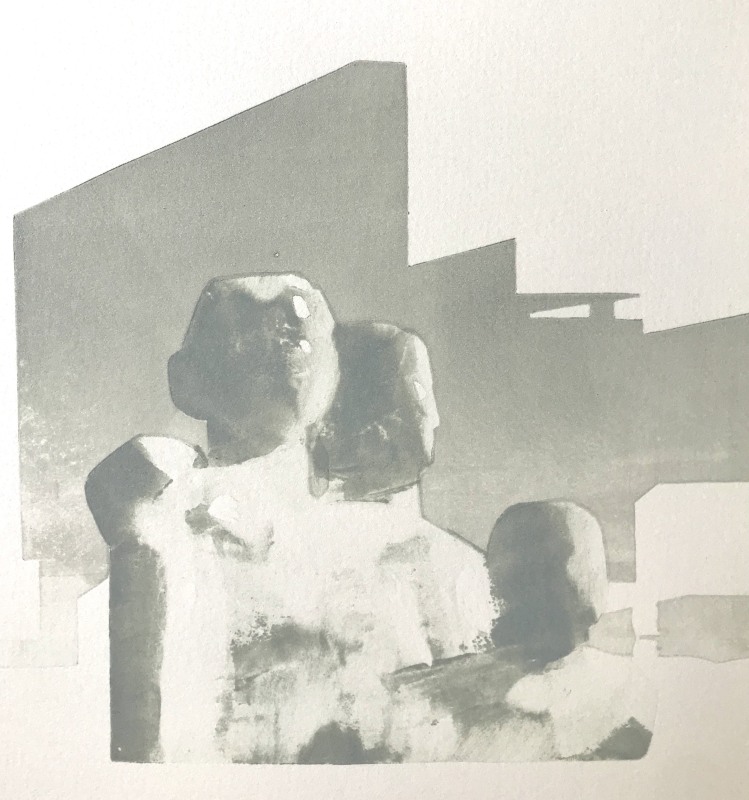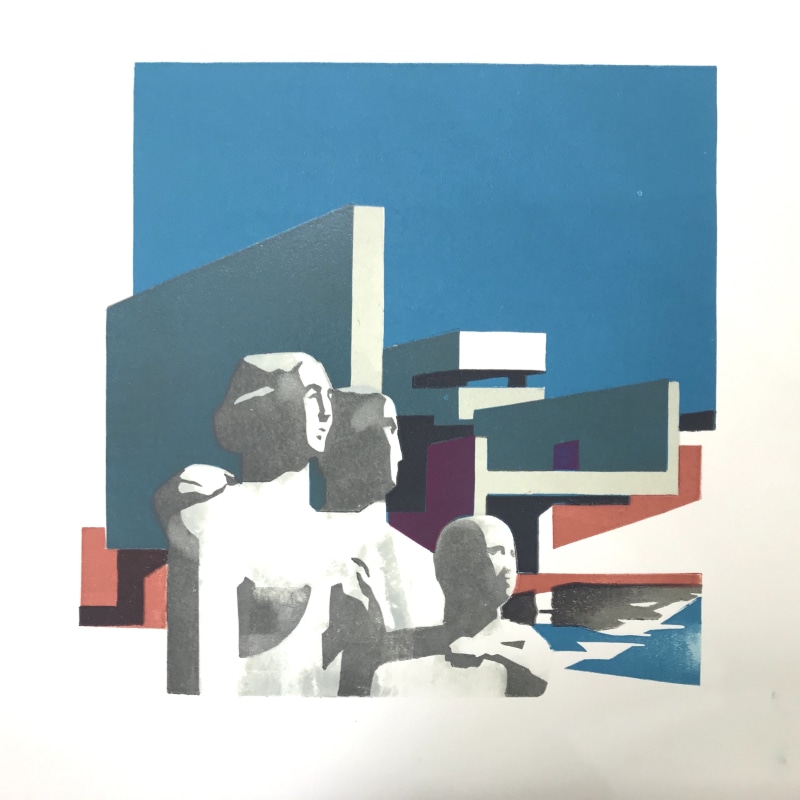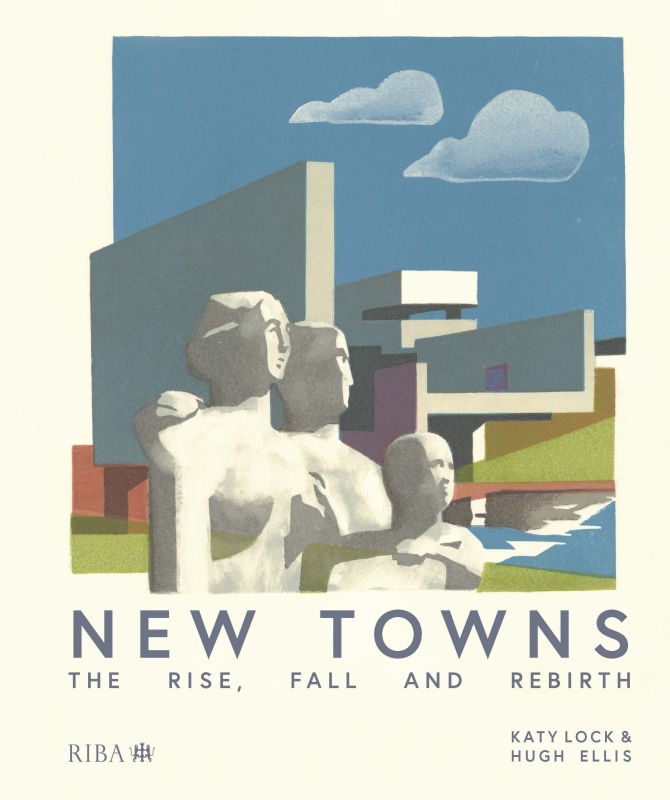RE Member Paul Catherall tells us about his working process through a recent commission he undertook, producing a new linocut print called 'New Towns' for a bookcover.
"This print was a commission from the Royal Institute of British Architects (RIBA) and the Town & Country Panning Association (TCPA) for their new book ‘New Towns, The Rise, Fall and Rebirth.’
I was given quite a direct brief for this illustration. RIBA & TCPA wanted to include Victor Pasmore’s Apollo Pavilion & Henry Moore’s ‘Family Group’ sculpture from Harlow.
Possibly because of my illustration training I’m happy having a restricted commission and I don’t get too precious. In fact it gives me time to concentrate on just getting the image right rather than have all that time scratching your head and pondering about what to do….It’s great to just get hold of some reference and be able to start sketching.
I always start sketching out rough compositions into a tracing paper pad - it gives me the opportunity to use elements that i like from the previous sketch rather than having to draw the whole thing out again & again. I’ve attached 4 sketches, hopefully showing the different stages but there were at least 10 different sketches along the way. Usually there is more than this - often over 20, though sometimes it’s just moving the odd line by 5mm…!
When i’ve reached a composition that I’m happy with I’ll produce a rough gouache painting to use as a guide for when printing. Sometimes this comes out well and I can start working towards the drawing to scale for the lino and sometimes it’ll take about 4 or 5 colour visuals. After years of doing this I’ve learnt that this methodical planning definitely brings better results. In the old days I used to just have the colours in my mind and print entire editions of up to 50 (about 3- 4 weeks work) it made the final colour pretty stressful!
Luckily with the New Towns print I was pretty happy with the palette - see the painting in the images above.
So, the next step was to enlarge the drawing to the size the of the print and re draw - making minor adjustments to angles & proportions etc. I call the final drawing the ‘master’ as this is the drawing that I use to trace on all the pieces of lino and also to trace onto my registration plate. Unfortunately my registration plate is at Artichoke print workshop, where I do all my printing so can’t share that with you. I basically trace out the drawing in reverse so I can place my separate lino plates - some in jigsaw like pieces, onto the registration card then work out where my paper should be placed on top and draw a straight line with one end marked.
I have a couple of snaps taken during the printing stages, I wanted to create that slightly textured feel for the Henry Moore sculpture so I rolled ink in a painterly fashion directly into the figures section of lino & used my fingers & tissue to wipe away areas - basically using a mono print technique to create that stone effect.Then the other colours were printed quite flat one by one - then towards the end I skimmed the edges of the figure lino plate with a small roller to create a textured weathered outline in some parts.
I like the hopeful, optimistic feel that the image conveys which seemed appropriate for the re evaluation of the New Towns era."
Paul Catherall, 2020
